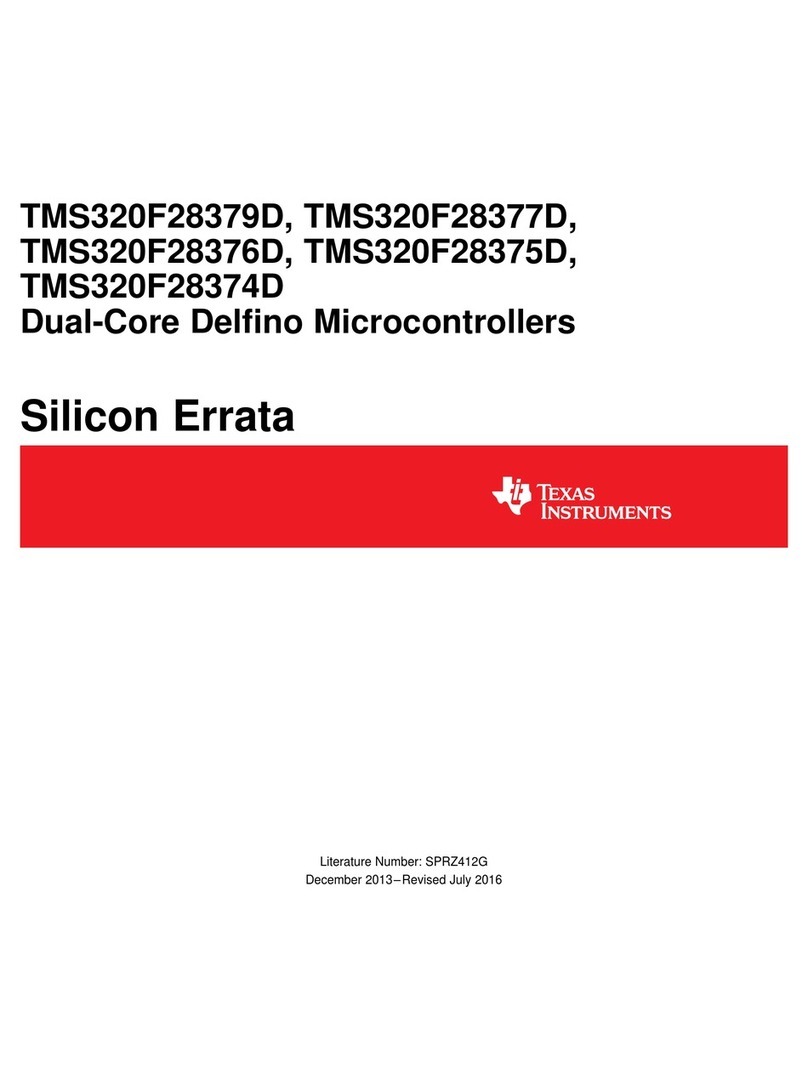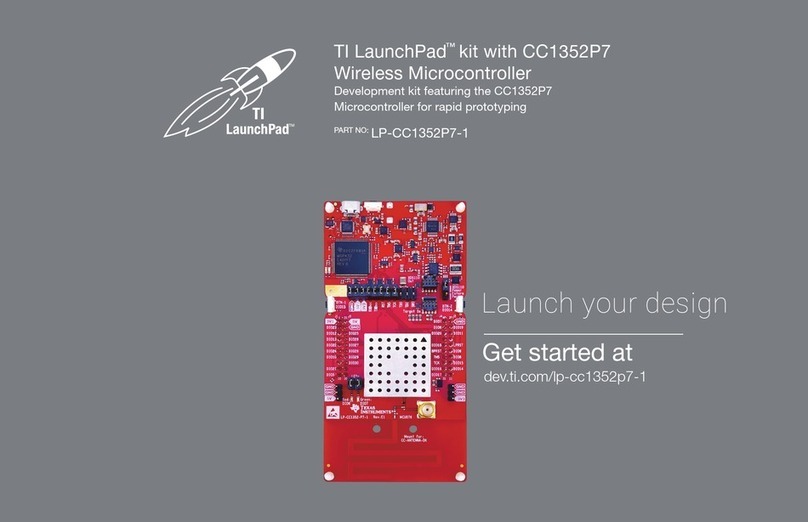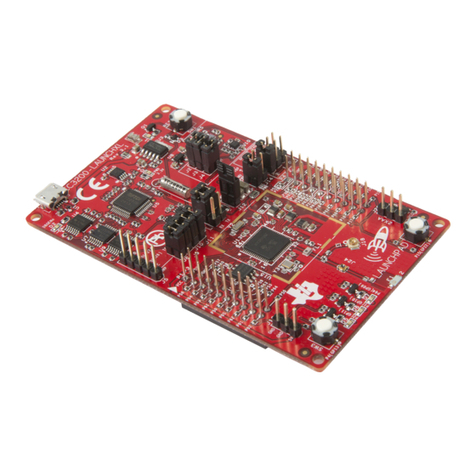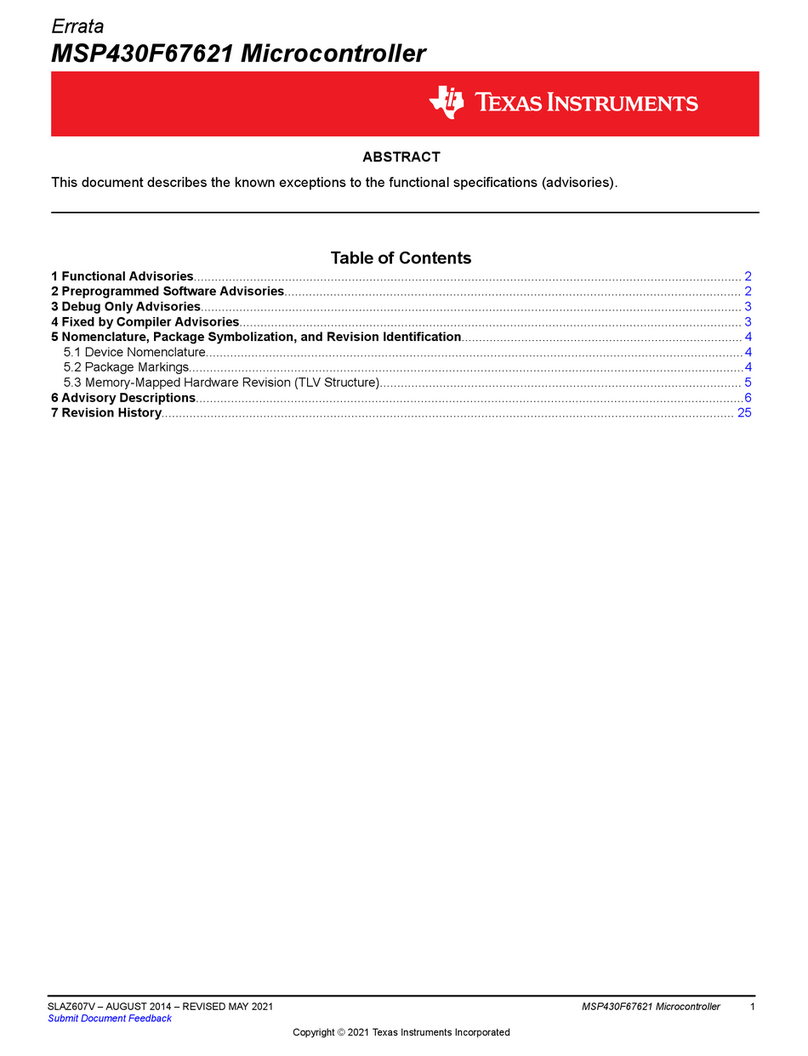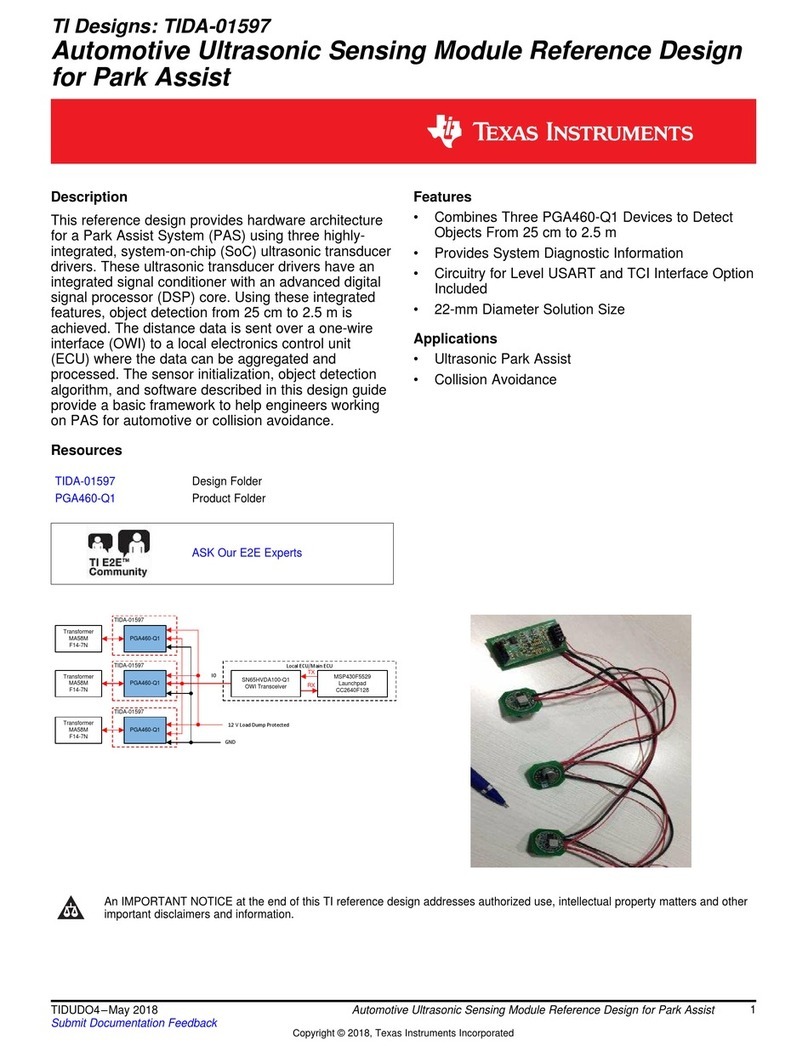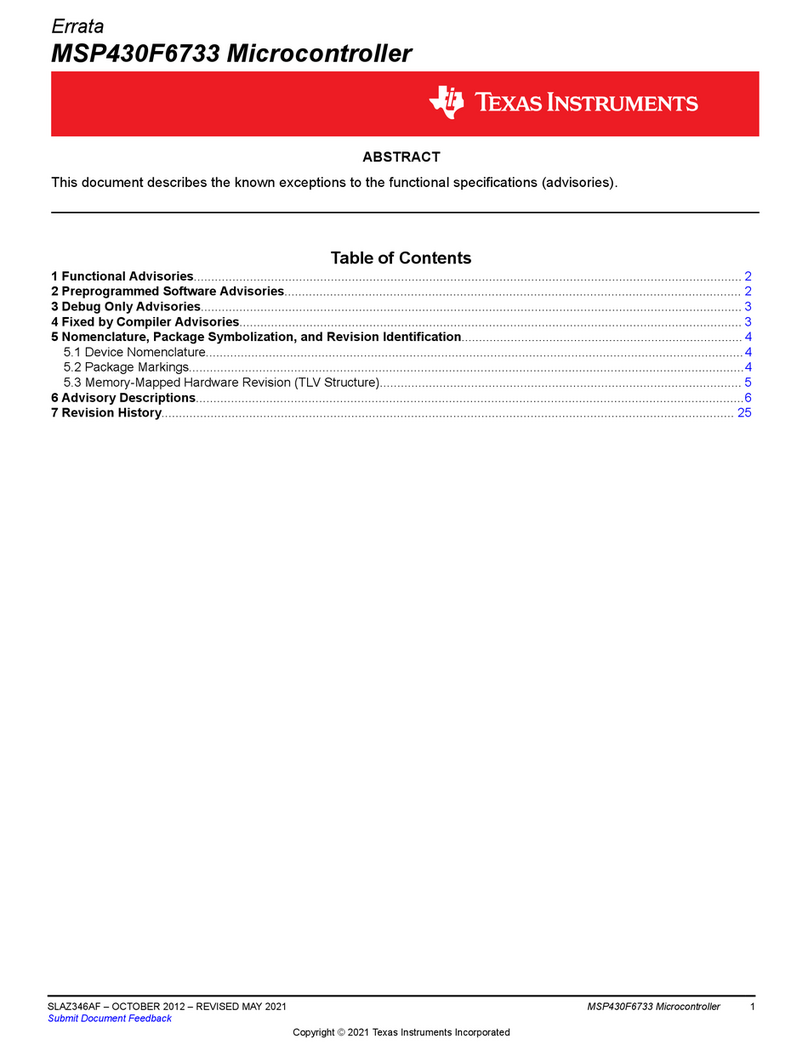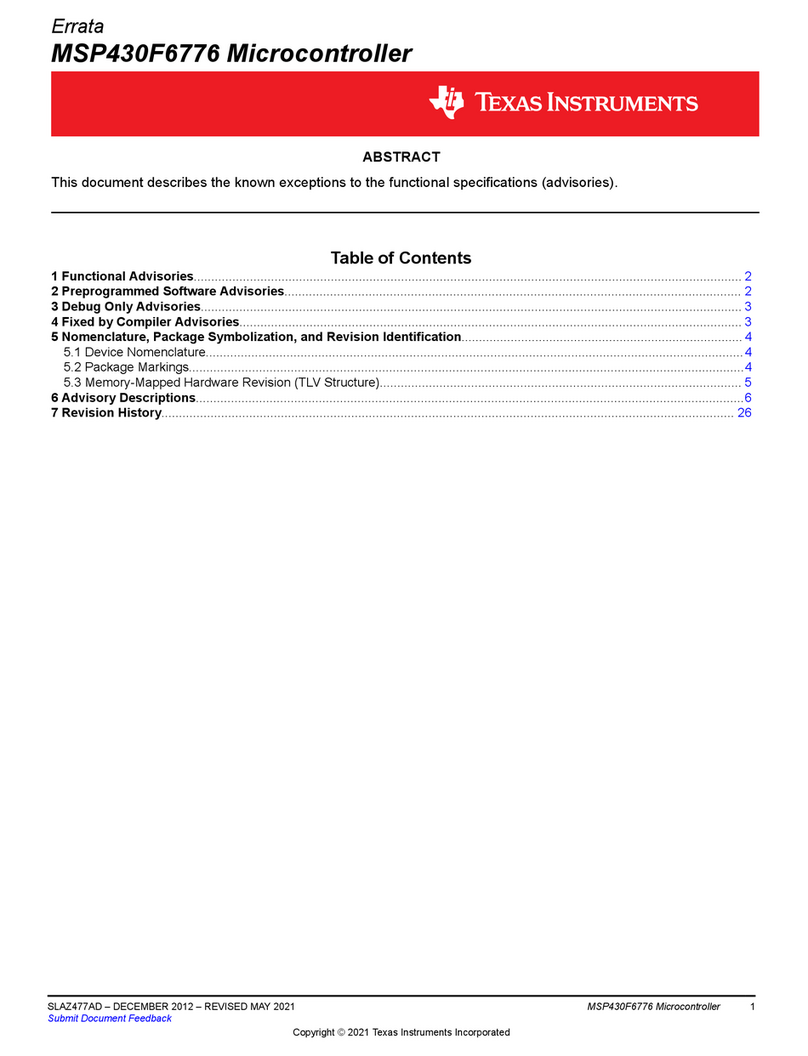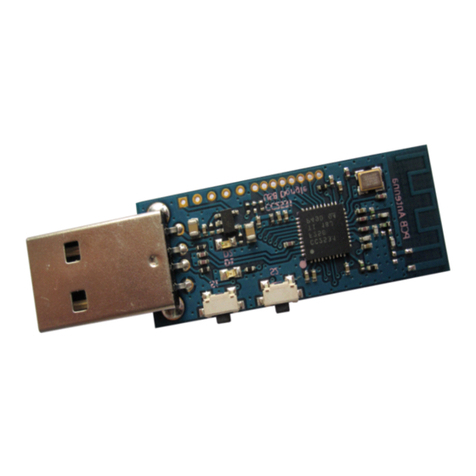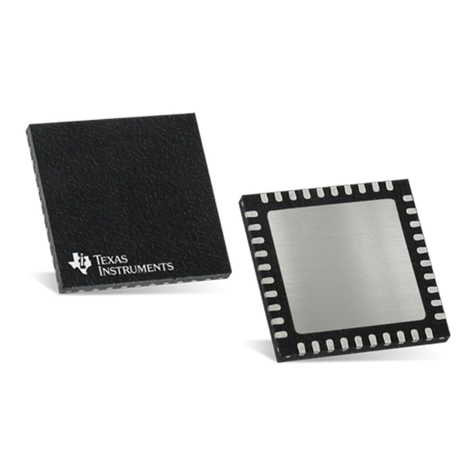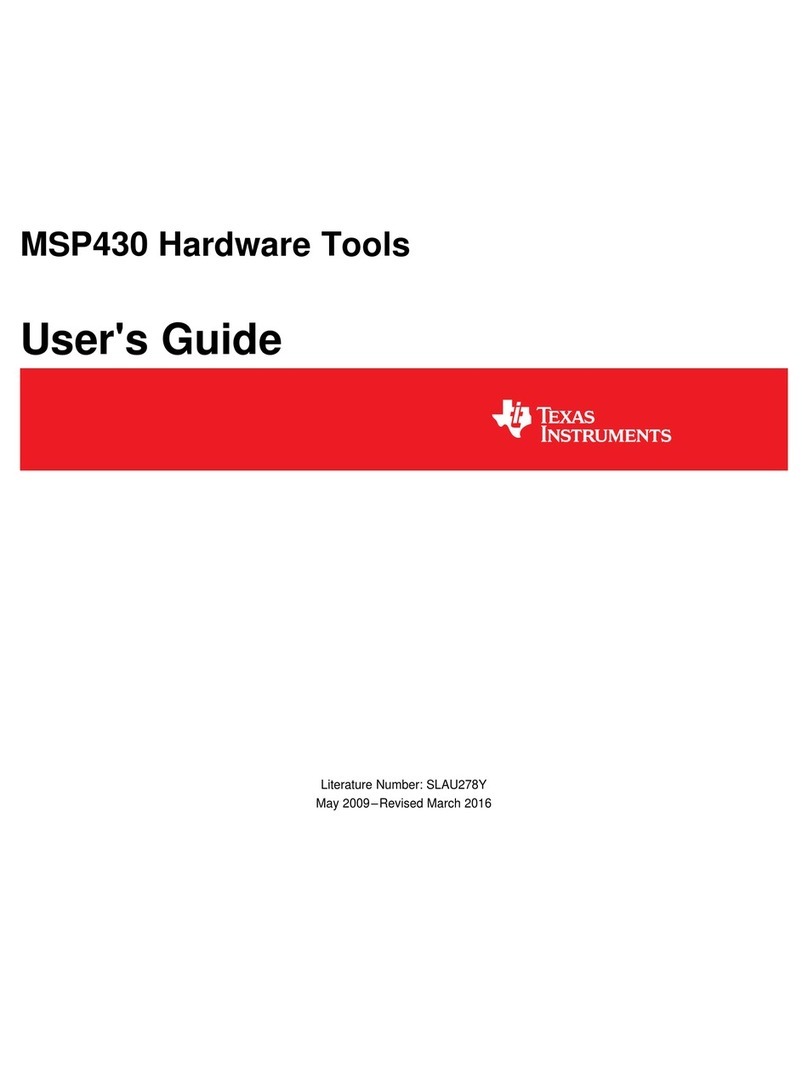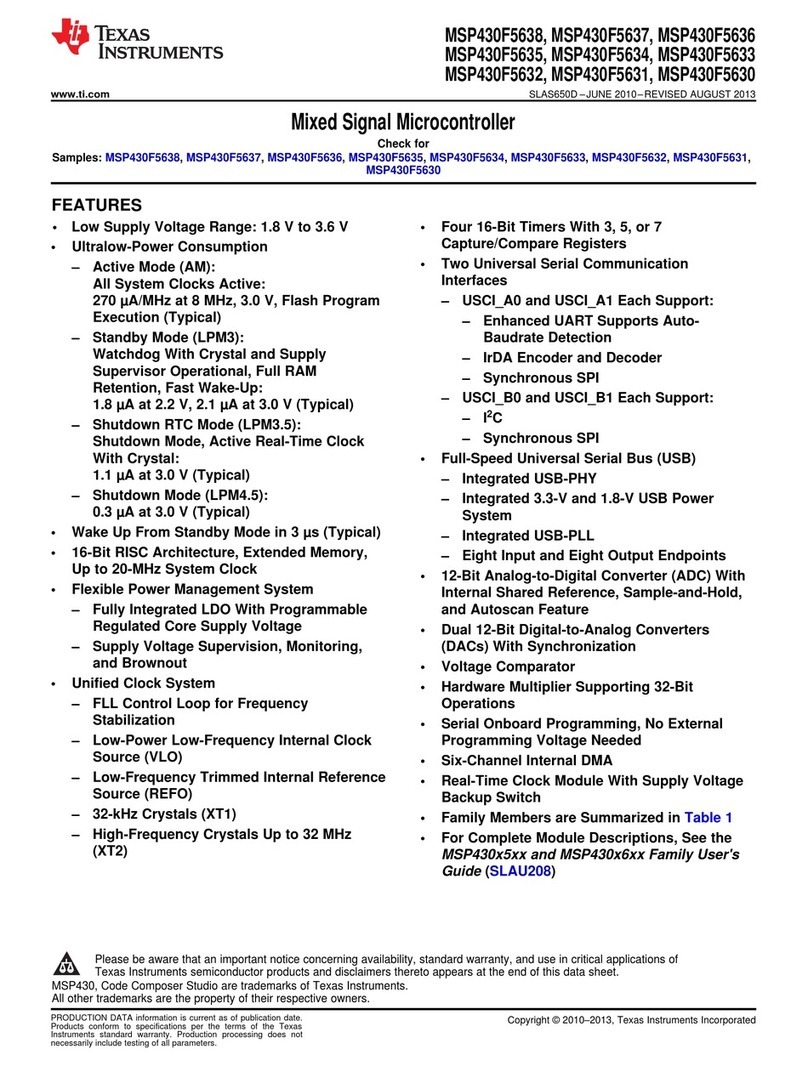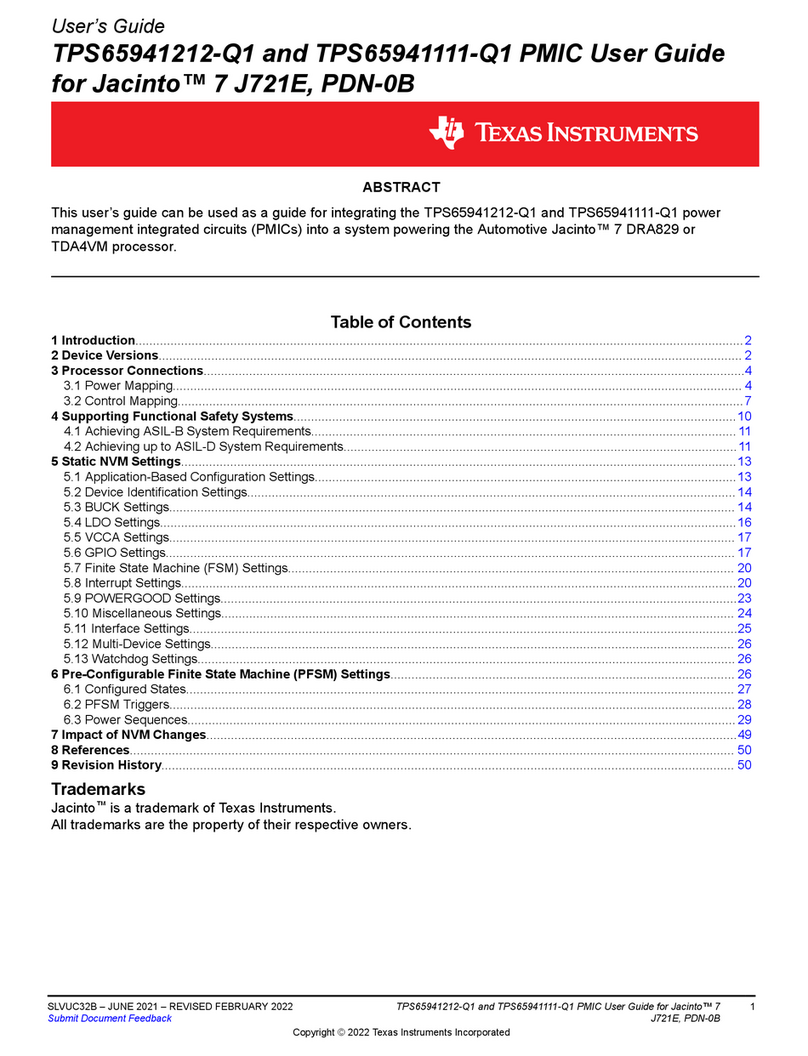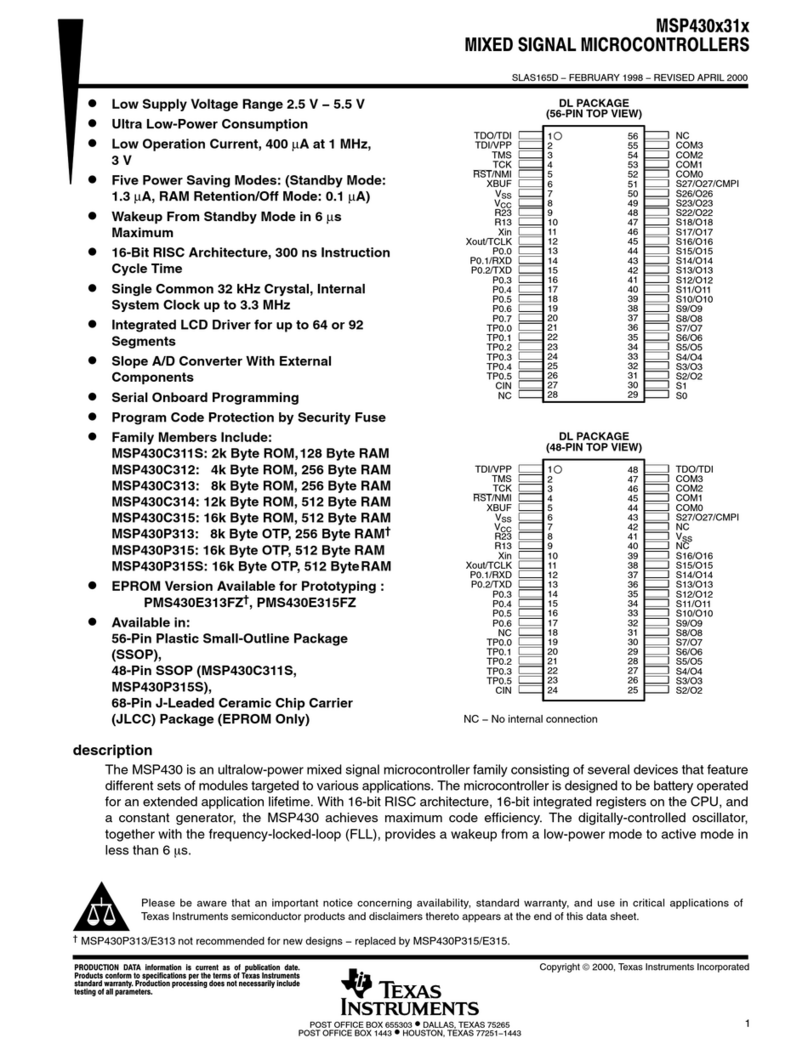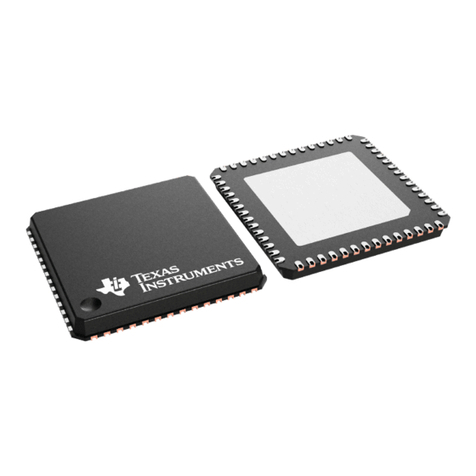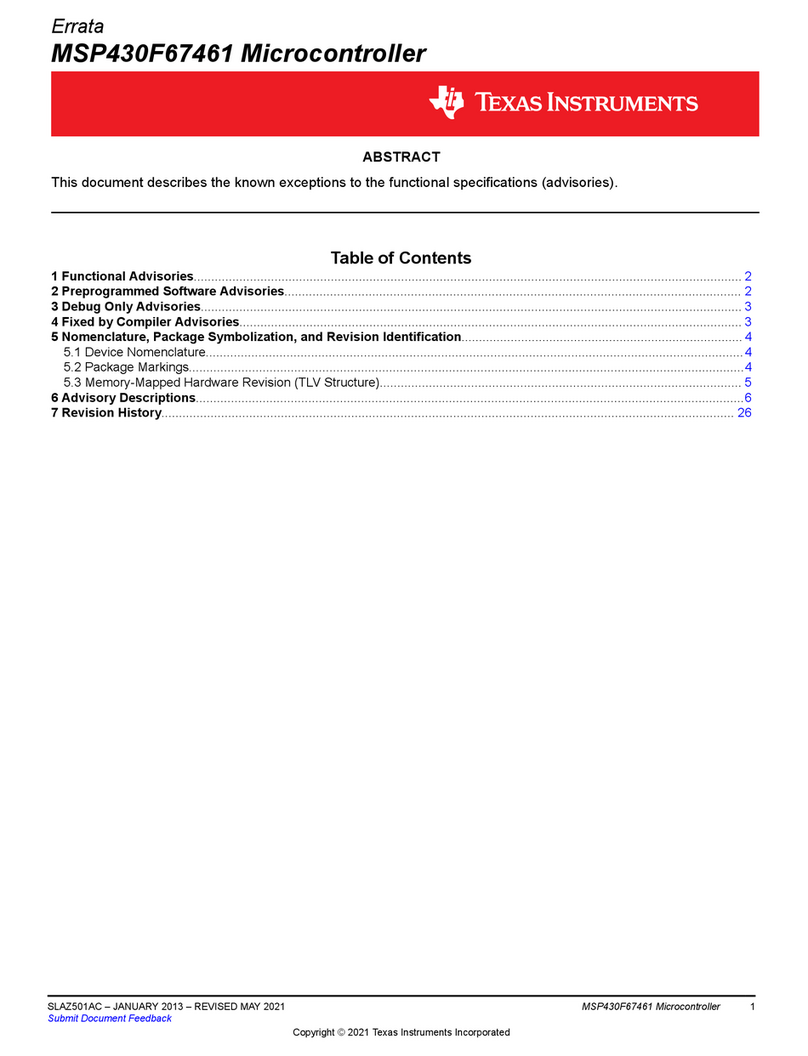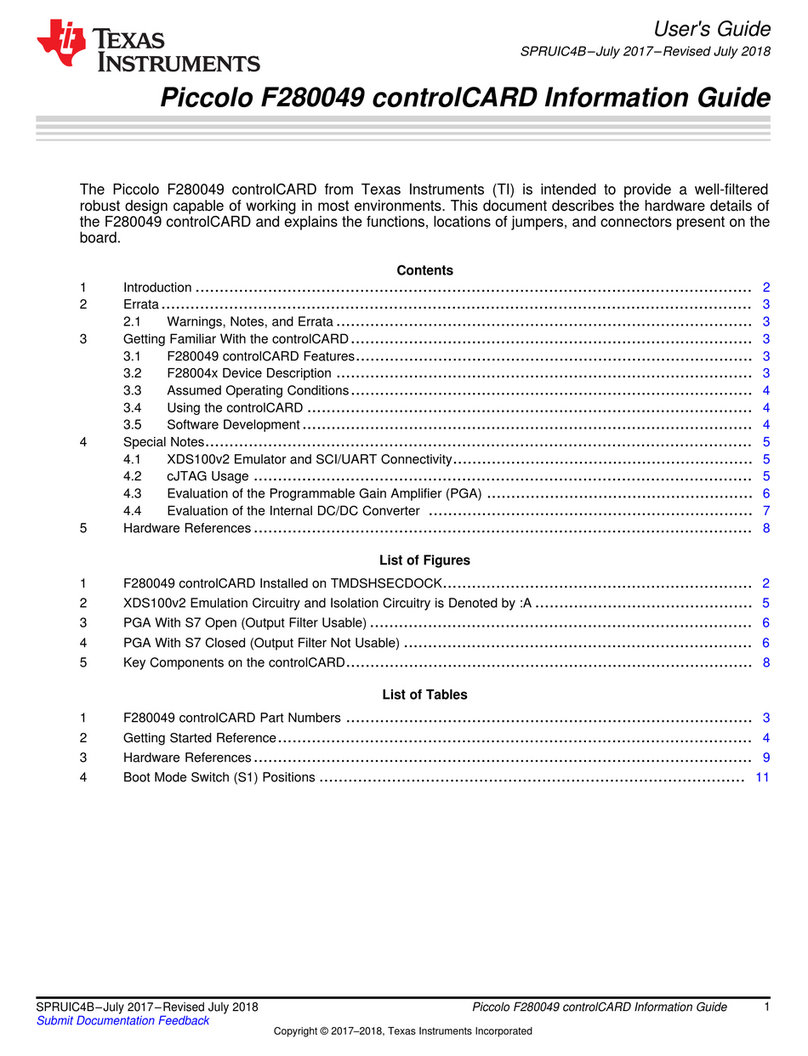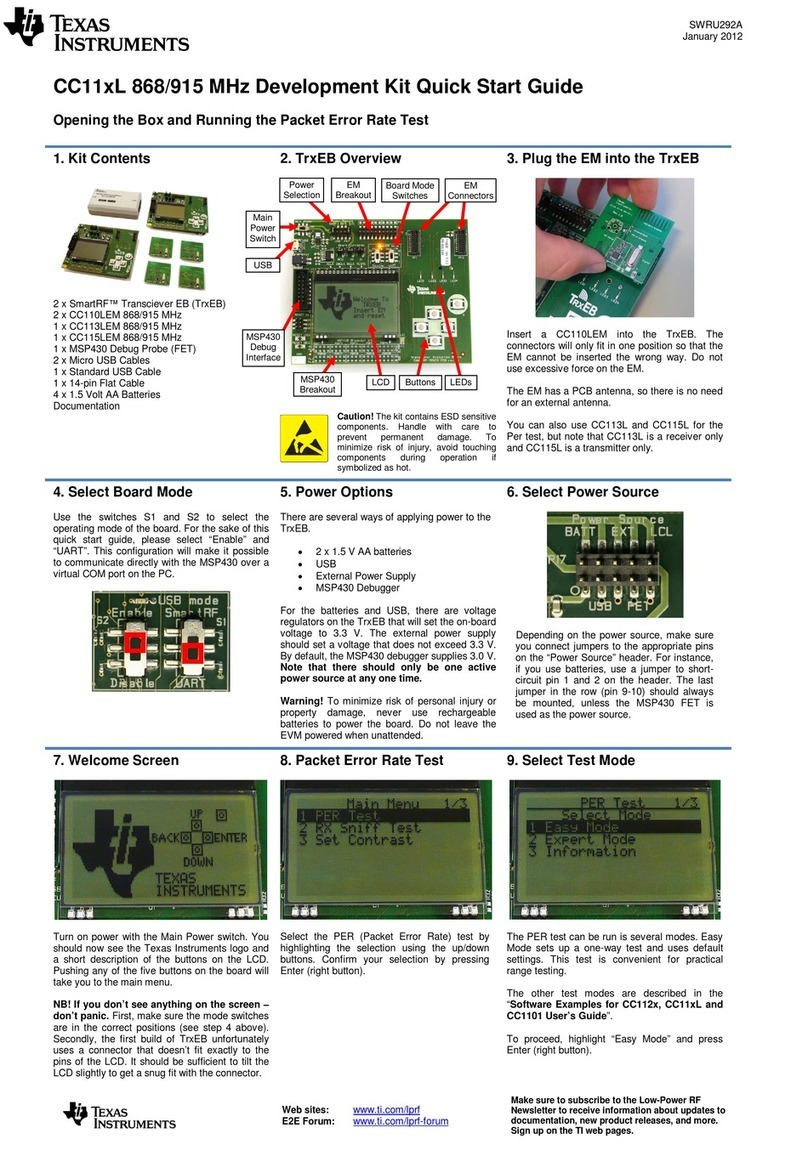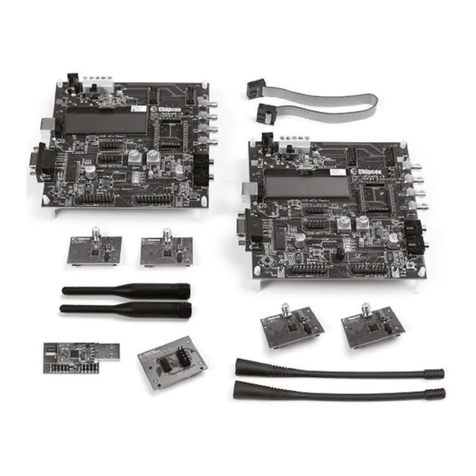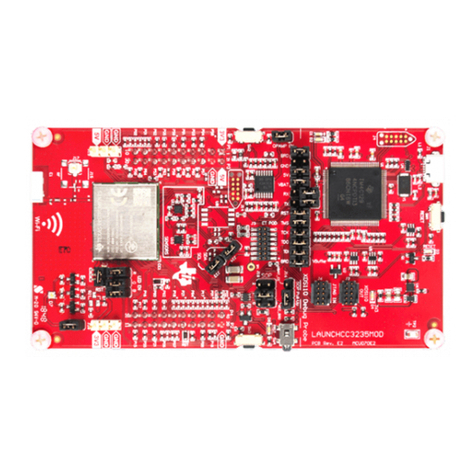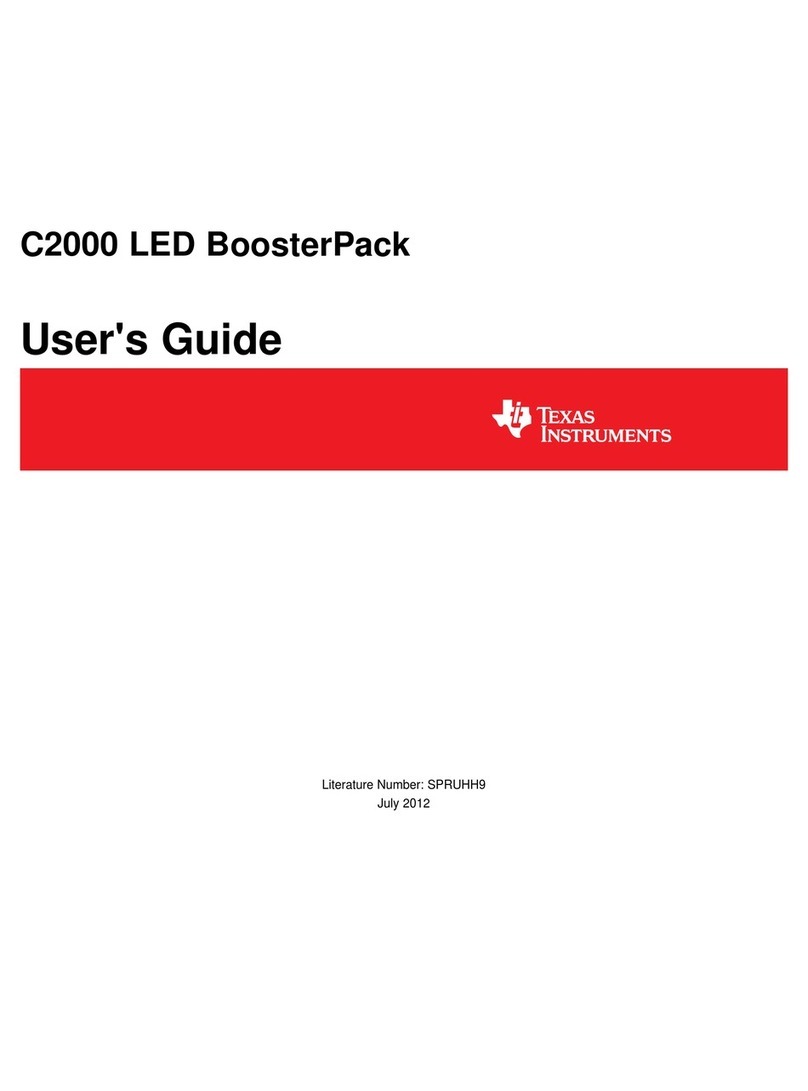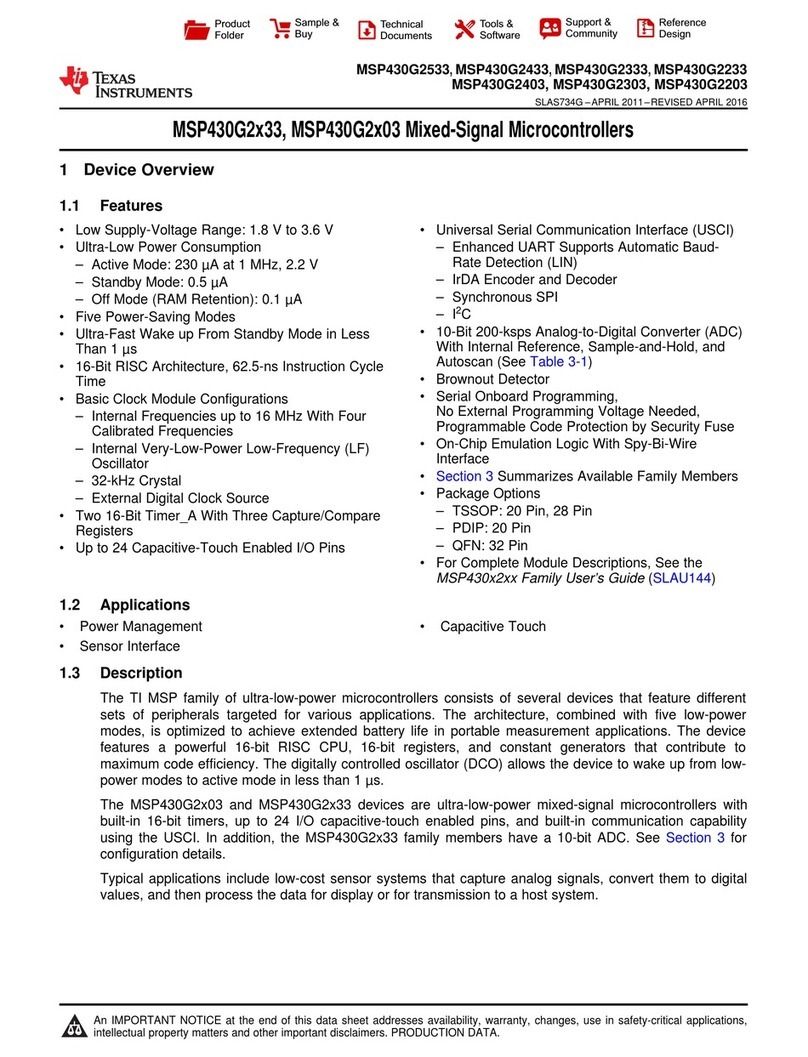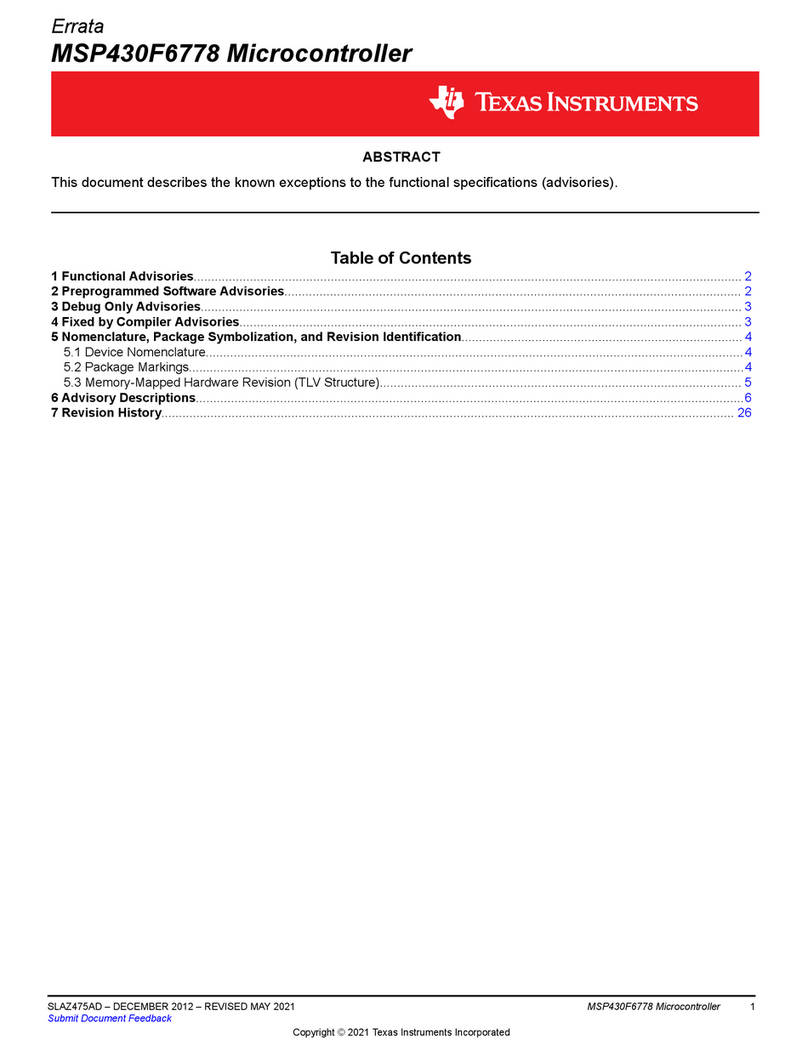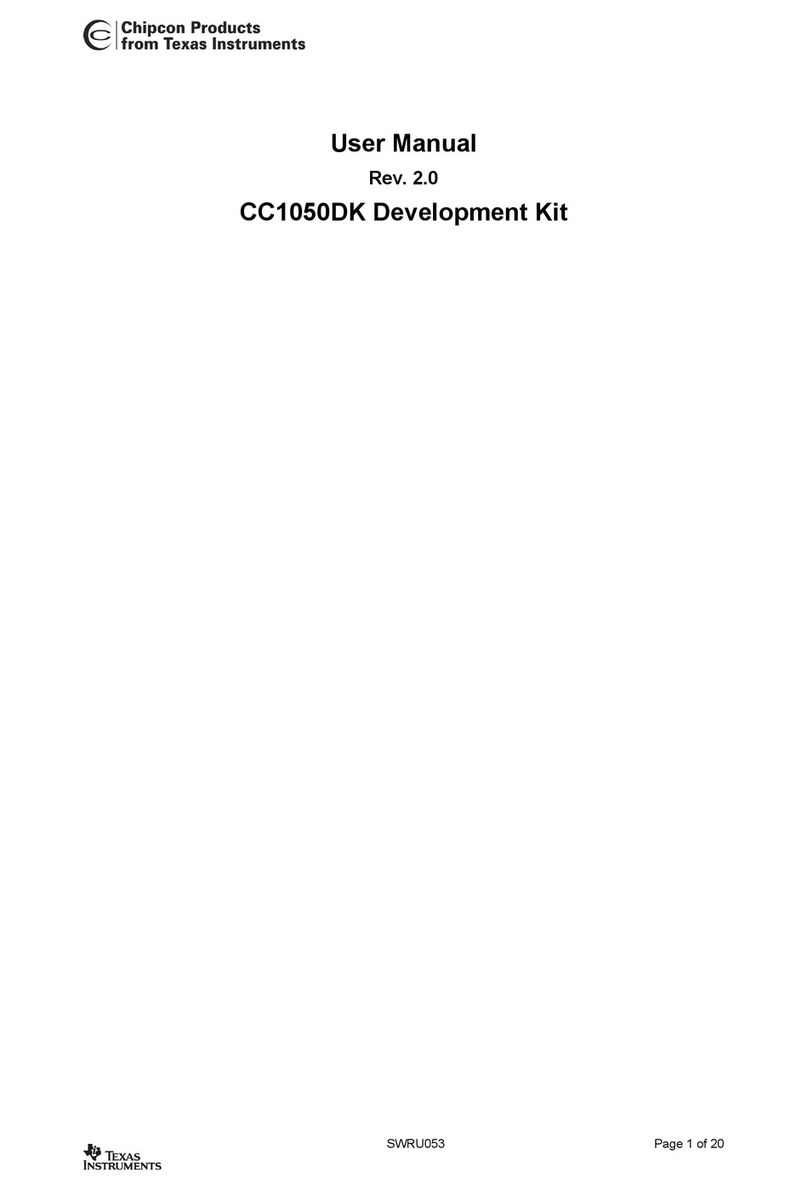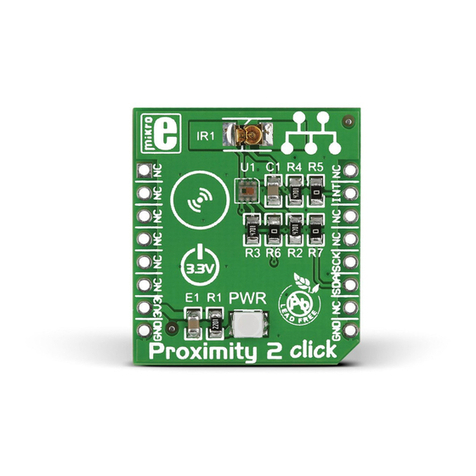
SWRU351
April 2013
Web sites: www.ti.com/lprf
E2E Forum: www.ti.com/lprf-forum
Make sure to subscribe to the Low-Power RF
Newsletter to receive information about updates to
documentation, new product releases, and more.
Sign up on the TI web pages.
ZigBee Light Link Development Kit Quick Start Guide
Opening the Box and Setting up a ZLL Network in 3 Simple Steps
1. Kit Contents
•3 x Zlight2 LED boards
•1 x CC2531 USB dongle
•3 x micro-USB cables
•Documentation
2. Regulatory Information
The Zlight2 boards and the CC2531 USB dongle are
FCC- and IC certified and are tested/compliant with
ETSI/R&TTE over temperature from 0 to +35°C. The
CC2530 USB dongle has an on-board meandered
inverted F PCB antenna while the Zlight2 has an on-
board half wave dipole PCB antenna.
Caution! The kit contains ESD sensitive
components. Handle with care to prevent
permanent damage.
3. Purpose of the Kit
The CC2531 ZigBee Light Link (ZLL) development
kit is intended for customers who would like to
evaluate ZLL lighting control for LED light products,
and develop simple applications and demonstrators
based on this standard.
The kit contains everything needed to set up a ZLL
network and switch the lights on and off individually
or in groups. More advanced ZLL control such as
hue, saturation, groups and scenes can be tested
using a command line tool, or even cloud based
control solutions such as Ninja blocks
(http://www.ninjablocks.com/). Information about this
can be found by following the links supplied at the
end of the document.
4. Power Options
The lights and the USB dongle are powered
through the USB connector. It is
recommended that the lights are powered
from a dedicated USB power supply capable
of supplying at least 800mA and max 5.5V.
The CC2531 USB dongle is used to control
the lights, and can be powered from most
USB ports. In order to use the command line
control tool, it is recommended that the USB
dongle is connected to the USB port of a PC.
5. Powering the Boards
(Step 1)
•Connect the Zlight2 boards to your USB power
supply using the supplied cables.
•Connect CC2531 USB dongle to an available USB
port on your PC.
Do not leave the boards powered when not in
use or unattended.
6. Starting the Network
(Step 2)
In ZLL, the process of pairing a new lamp with a
remote control is called touch linking.
During the touch linking process described in the
next paragraph, beware that it is important not to
release S1 until the light has completed its single
flash and the LEDs on the dongle have given a
small series of green flashes. This takes about 5
sec. (continued)
Starting the Network (cont.)
Touch link the Zlight2 boards one at a time
by holding the light close to the CC2531
USB dongle (see picture above) and
pressing and holding button S1 on the
dongle until the LED on the dongle has
flashed green.
When this has been done for all 3 Zlight2
boards, they will all be on the same
network, controlled by the dongle
7. Operating the Zlight2
(Step 3)
Caution! To minimize the risk of fire or
equipment damage, make sure that
ambient temperature air is allowed to
circulate freely around the Zlight2 board
when operating. Avoid touching
components during operation if symbolized as hot. A
thermal shutdown routine is implemented in the
included firmware running on the lights. Always make
sure that this routine is implemented if you flash your
own firmware. The easiest way to do that is to base it
on ZStack-Lighting-1.0.2 or later releases from Texas
Instruments.
Caution! DO NOT STARE DIRECTLY
INTO LED LIGHT SOURCE. Intense
light sources have a high secondary
exposure potential due to their blinding
effect. A temporary reduction in visual
acuity and afterimages can occur, leading to irritation,
annoyance, visual impairment, and even accidents,
depending on the situation. Always consider the use
of light filtering/darkening protective eyewear and be
fully aware of surrounding laboratory type set-ups
when viewing intense light sources to
minimize/eliminate such risks in order to avoid
accidents related to temporary blindness.
CAUTION
Possible hazardous optical
radiation emitted from this product.
Do not stare at operating lamp.
Maybe harmful to eyes.
•Do not stare at operating LEDs –
(Risk Group 1 (RG1) @ 0.9m)
•Per IEC 62471 ed 1.0: 2006-07
(“Photobiological Safety of Lamps and Lamp
Systems”) this product has been classified in
Risk Group 2. Products classified as Risk
Group 2 do not pose a hazard due to the
aversion response to very bright light sources or
due to thermal discomfort. It should be noted
that INTENTIONALLY staring at the lamp for
extended lengths of time from short distances
could lead to a potential risk of eye damage due
to a retinal blue-light hazard. In order to reduce
the potential of exposure to a retinal blue-light
hazard, the operator must avoid any direct view
of the LEDs while in operation, from a distance
of 0.9m, or closer.
Touch Link
Short press (<2s): Toggle on/off
